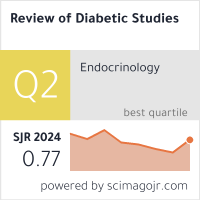Burns And The Lungs: An Overview Of Physiological Complications, Critical Care Needs, The Role Of Plastic Surgery, Internal Medicine, Challenges, And The Significance Of Imaging
DOI:
https://doi.org/10.70082/744vch42Keywords:
Thermal Injuries, Wound Healing, Burn Wound Infection, Pain Measurement, Quality of Life.Abstract
Burn injuries represent a major cause of morbidity and mortality worldwide, especially due to smoke inhalation, which complicates therapeutic management. The primary constituents of inhaled smoke are thermal, particle, and chemical elements. This study aims to demonstrate different specialty coordination for burn patients’ management showing the challenges that encounters this management and the importance of early assessment and imaging utilization.
Method: This retrospective, single-center study examines the multidisciplinary management and outcomes of burn patients with pulmonary complications. Forty patients were selected and divided into two groups: one received standard burn management, while the other also underwent escharotomy/fasciotomy for circumferential chest burns. Data were collected on patient demographics, physiological complications, critical care metrics, surgical interventions, internal medicine challenges, and imaging data.
Results: The intervention group exhibited significantly improved outcomes, including reduced wound healing time (18.3 vs. 25.8 days), lower infection rates (15% vs. 40%), less patient pain (VAS: 4.1 vs. 6.8), better range of motion (90 vs. 75), higher quality of life scores (78 vs. 62), and lower depression scores (8 vs. 14). The intervention resulted in a decrease in positive wound cultures (20% compared to 50%), diminished scarring severity (52% versus 85%), and a tendency towards reduced ICU hospitalizations (10% versus 30%). Lung imaging demonstrated characteristic indicators of inhalation harm from burns with partial resolution, underscoring the necessity for thorough treatment.
Conclusion: The interdisciplinary intervention for burn patients resulted in notable enhancements, including expedited recovery, reduced infection rates, improved pain management, and increased mobility, consequently elevating quality of life.
Downloads
Published
Issue
Section
License

This work is licensed under a Creative Commons Attribution-ShareAlike 4.0 International License.


